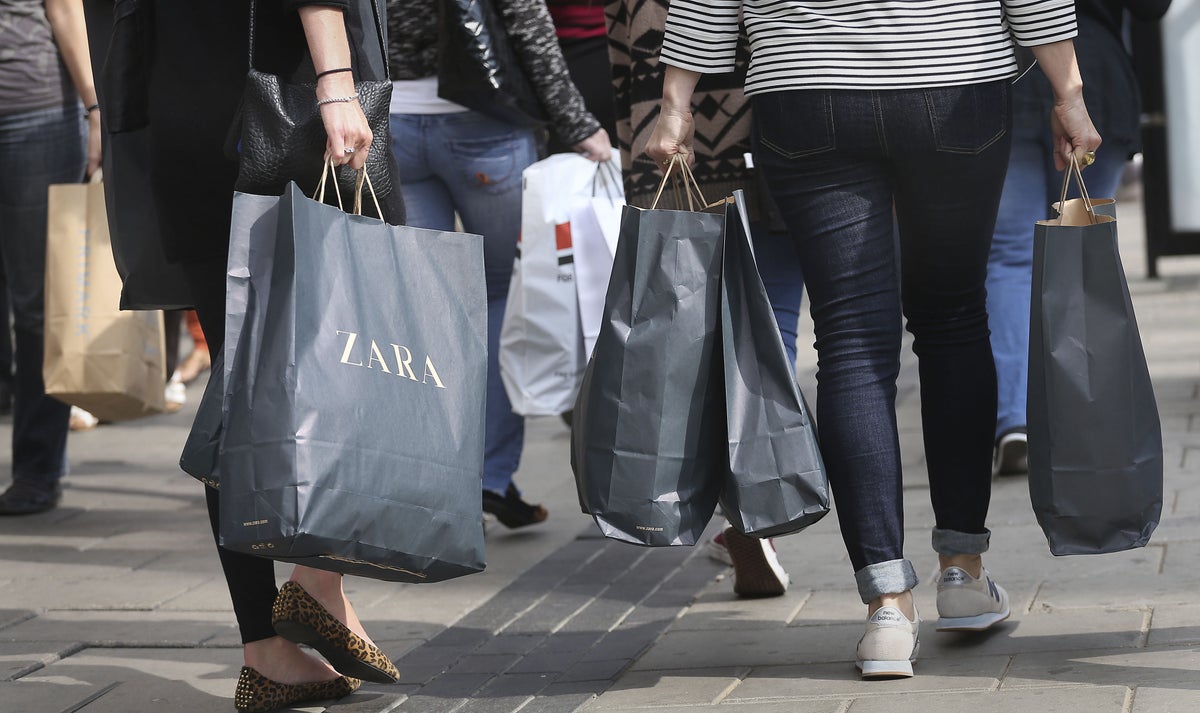
Shopper footfall is set to remain below pre-pandemic 2019 levels for the foreseeable future as the cost-of-living crisis deepens and working from home becomes a permanent fixture, figures suggest.
Despite the Platinum Jubilee fuelling a strong start to the month, footfall then worsened each week of June to eventually drop 16% below 2019 levels, analysts Springboard said.
Springboard said the figures confirm its outlook that the cost-of-living crisis is starting to limit consumer spending, while working from home has “become a permanent fixture”.
Whilst store sales are undoubtedly buoyed by spending from those middle income families who had saved during Covid, we fully expect to see this spending slowing as people gear up for the increase in energy bills in October and for Christmas— Diane Wehrle, Springboard
It now anticipates that footfall in the second half of 2022 will remain at least 10% to 15% below 2019 levels.
Footfall strengthened in June to 12.3% below 2019 from a drop of 13.7% in May 2022, but shopper visits were 16.5% down in shopping centres and 14.9% lower on high streets.
The gap from 2019 averaged a drop of 14% over the four weeks in June following the Platinum Jubilee long weekend, reaching a fall of 16% across all retail destinations and 19.5% on high streets in the final week.
Robust store sales in June mitigated the overall impact on the retail sector, but sales were erratic from week to week – the first sign of consumers pulling back on spending, Springboard suggested.
Continued hybrid working between home and office continued to affect footfall in larger towns and cities, with visits down 21% on 2019 in central London compared with a 9.9% drop in outer London.
The results for June continue to reflect the impact on footfall in towns and cities of hybrid working— Diane Wehrle, Springboard
Diane Wehrle, insights director at Springboard, said: “Whilst store sales are undoubtedly buoyed by spending from those middle income families who had saved during Covid, we fully expect to see this spending slowing as people gear up for the increase in energy bills in October and for Christmas.
“The results for June continue to reflect the impact on footfall in towns and cities of hybrid working. The trend that has occurred since the start of the pandemic for footfall in smaller high streets being consistently more resilient than in larger cities continued in June.
“Looking forward to the second half of 2022, in the light of the squeeze on household budgets and in the absence of a significant return to full-time office working by employees, we anticipate that footfall will remain at least 10% to 15% below the 2019 level.”







